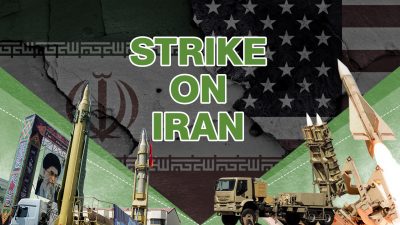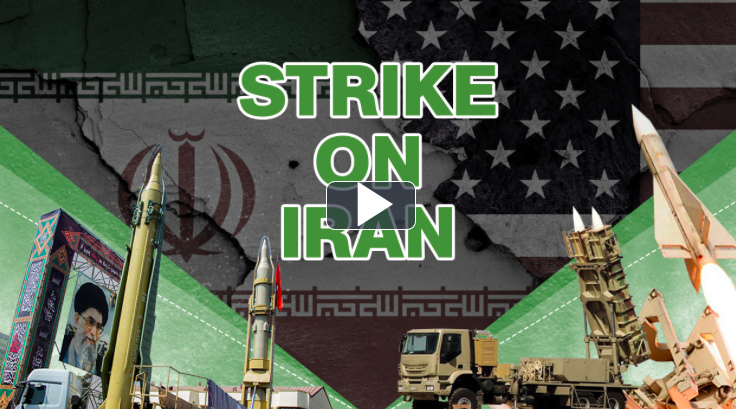Video: How Effective is Iran’s Air Defense Sytem? Fending Off US-Israeli Missile and Drone Attack

The current military and diplomatic situation in the Middle East demonstrates that the capability and quality of air defense forces is especially important for states operating in a tense geopolitical environment.
Saudi Arabia with Patriot surface-to-air missiles appeared to be unable to defend itself from missile and drone attacks by the Houthis. Thus, the Kingdom lost its remaining chances to achieve a military victory in the Yemeni war and resumed negotiations with the Houthis.
Devastated by the war on terrorism, Syria and Iraq are suffering from regular Israeli strikes carried out under a pretext of combating the so-called Iranian threat. The Trump administration strongly supports these actions and together with its Israeli counterparts fuel the anti-Iranian hysteria to justify its own policies in the region. In a recent interview to Jerusalem Post, Secretary of State Mike Pompeo claimed that Israel has a “fundamental right” to bomb what it wants to “ensure” its own “security”. In the event of a new round of tensions in the Persian Gulf, Iran’s ability to defend its territory from a possible aerial attack will be one of the factors shaping the course of the possible escalation.
The Islamic Republic already demonstrated its air defense capability on June 20, 2019, when forces of the Islamic Revolutionary Guard Corps (IRGC) shot down a U.S. RQ-4A Global Hawk BAMS-D surveillance drone that violated Iranian airspace near the Strait of Hormuz. Iran says that the Global Hawk was downed with its developed surface-to-air missile (SAM) system Khordad-3.
As a part of its multi-layered air defense, Iran employs a variety of short-, medium- and long-range systems. Earlier, the core of Iran’s air defense was foreign-made systems, including Russian, Chinese, and even US models. Today, Iranian air defense actively employs domestically produced systems. Most of foreign systems were locally modernized. The most capable foreign air defense system acquired by Iran is the Russian-made S-300, the delivery of which was completed in 2016. The most-widely known Iranian indigenous SAMs are the Bavar-373, the Khordad-15 and the Khordad-3.
The Bavar-373 is a multi-channel long-range SAM system created in Iran. According to the Iranian military, the system has a range of up to 200 km and altitude of up to 27 km. It is reportedly capable of hitting stealth air targets, cruise missiles and even warheads of ballistic missiles. Official Teheran says that the Bavar-373 is superior to the Russian S-300 and only slightly inferior to the S-400.
In 2019, Iran unveiled the medium-range SAM system Khordad-15. The system is capable of detecting fighter jets, cruise missiles and unmanned aerial vehicles in a range of 150km and track them within a range of 120 km. The Sayyad-3 missile, employed by the system, has a range of 200 km. The Khordad-15 reportedly can detect stealth targets in a distance of 85 km and can intercept and destroy them within a range of 45km.
There are more SAM systems of Iranian design: Talash and Raad. Each unit of the Talash system includes three vehicles, a truck carrying Patriot-style missile launchers and two command and control vehicles. The Talash-1 is employed for low and medium altitudes, the Talash-2 – for medium to high altitudes, and the Talash-3 – for high and very high altitudes. The Talash-2 can engage targets at a range of up to 120 km, and an altitude of up to 27km. Some sources say that the Talash concept originates from the Patriot.
The Raad SAM family externally resembles the Russian Buk and Buk M2 systems. According to Iranian sources, it is designed to confront hostile aircraft, cruise missiles, smart bombs, and unmanned aerial vehicles. The system’s Taer-2 missiles can trace and hit targets in ranges up to 50 km and in altitudes of up to 25-27 km. Another missile employed by the SAM is the Sayyad-2. It has a range of 75km and a top altitude of 30. The most modern version of this SAM system is the Khorad-3 employed against the US Global Hawk in June.
The development of these systems is the visible demonstration of successes of the Iranian military industrial complex. Pro-Iranian sources say that Iran successfully joined the United States, China and Russia in the club of the countries capable of producing effective long-range SAM systems. However, the tactical and technical data of the latest Iranian SAMs that are presented in the open press is very limited, and there are almost no data on the probability of interception of various types of targets. The degree of protection of Iranian SAMs from electronic warfare also remains a question. Accordingly, their real combat capabilities in the event of an armed conflict with a high-tech enemy cannot be estimated using the existing data. Another question is how successful can Iran’s multi-layered air defense be against combined drone, ballistic and cruise missiles strikes that Saudi Arabia experienced during the past years.
Representatives of the Trump administration, including the US president himself, repeatedly threatened Iran with a military action. However, no threats were ever turned into reality, even in a form of a symbolic move like the US missile strike on Syria’s Sharyat airfield. The US stance of empty threats and symbolic gestures is likely not a result the powerful Iranian air-defenses nor Washington’s attempts to avoid an open military escalation in the region. During the years of sanction pressure and military threats, Iran developed a complex asymmetric warfare doctrine. This doctrine provided the Iranian leadership with a number of means and measures that it can employ to deliver a painful blow to its adversaries, which consist primarily of the Israeli-US-Saudi alliance. Therefore, the cost of a military aggression against the Islamic Republic in the current conditions appears to be too high for sides that could be involved.
*
Note to readers: please click the share buttons above or below. Forward this article to your email lists. Crosspost on your blog site, internet forums. etc.
We call upon Global Research readers to support South Front in its endeavors.
If you’re able, and if you like our content and approach, please support the project. Our work wouldn’t be possible without your help: PayPal: [email protected] or via: http://southfront.org/donate/ or via: https://www.patreon.com/southfront


